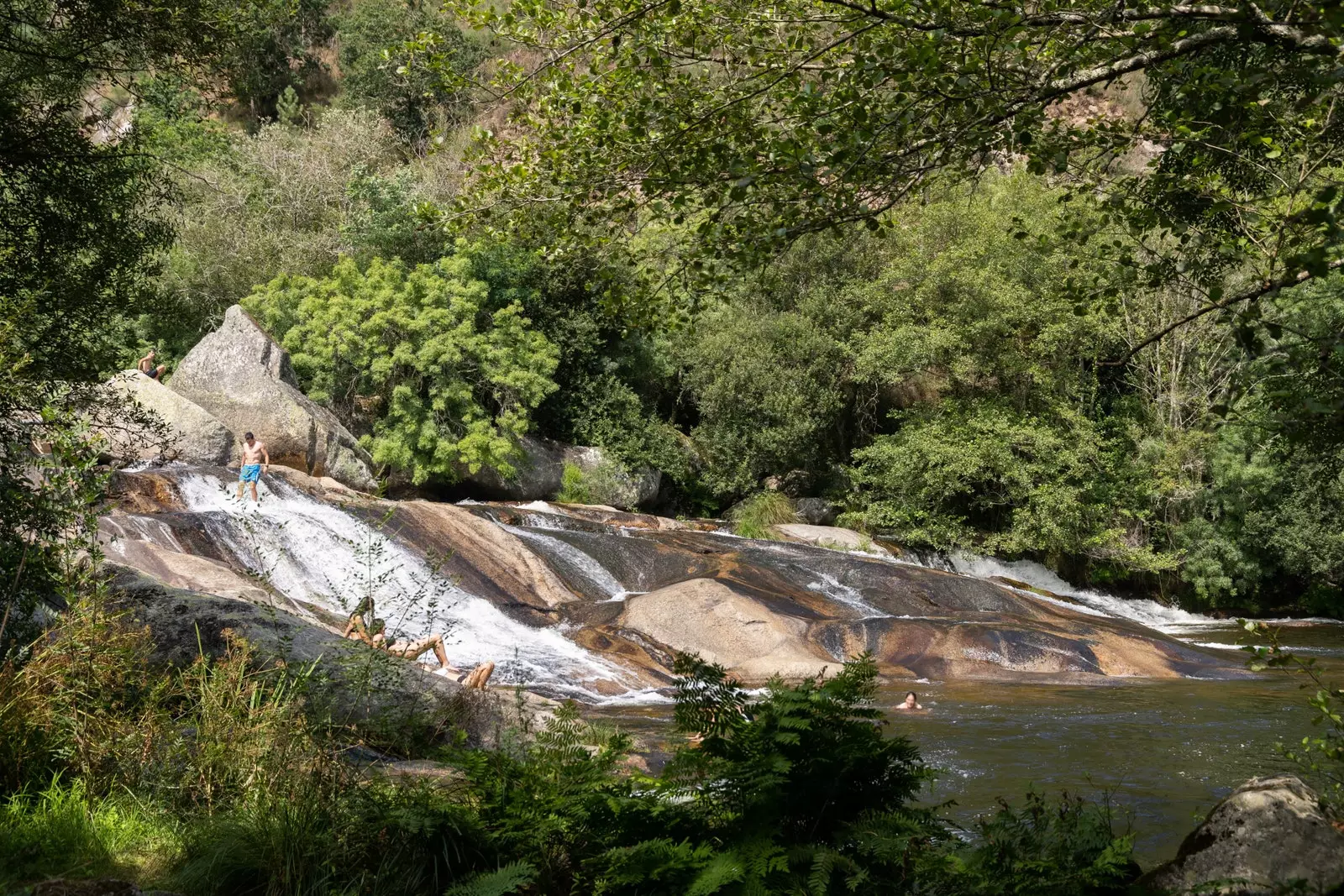
One of the waterfalls of the Fervenzas de Segade, on the Umia river.
When we think of Pontevedra, its essential landscapes always come to mind: the desired Atlantic islands and the Fifty wonderful beaches dotted around its three estuaries, those of Arousa, Pontevedra and Vigo.
Idyllic postcards for to dream of a province bathed by the Atlantic: the Cíes and its extremely white and protected sand, the tree-lined Bamio, Area da Secada and its wild dunes, the (gastro)secret Bueu, the kilometer-long and always lively Lanzada or Sanxenxo and its seafaring lifestyle.
But if we swim out to sea and dive into the heart of the Rías Baixas, we will find a territory full of natural and historical heritage, in which the rivers feed the land, but also the soul (traveler and adventurer).
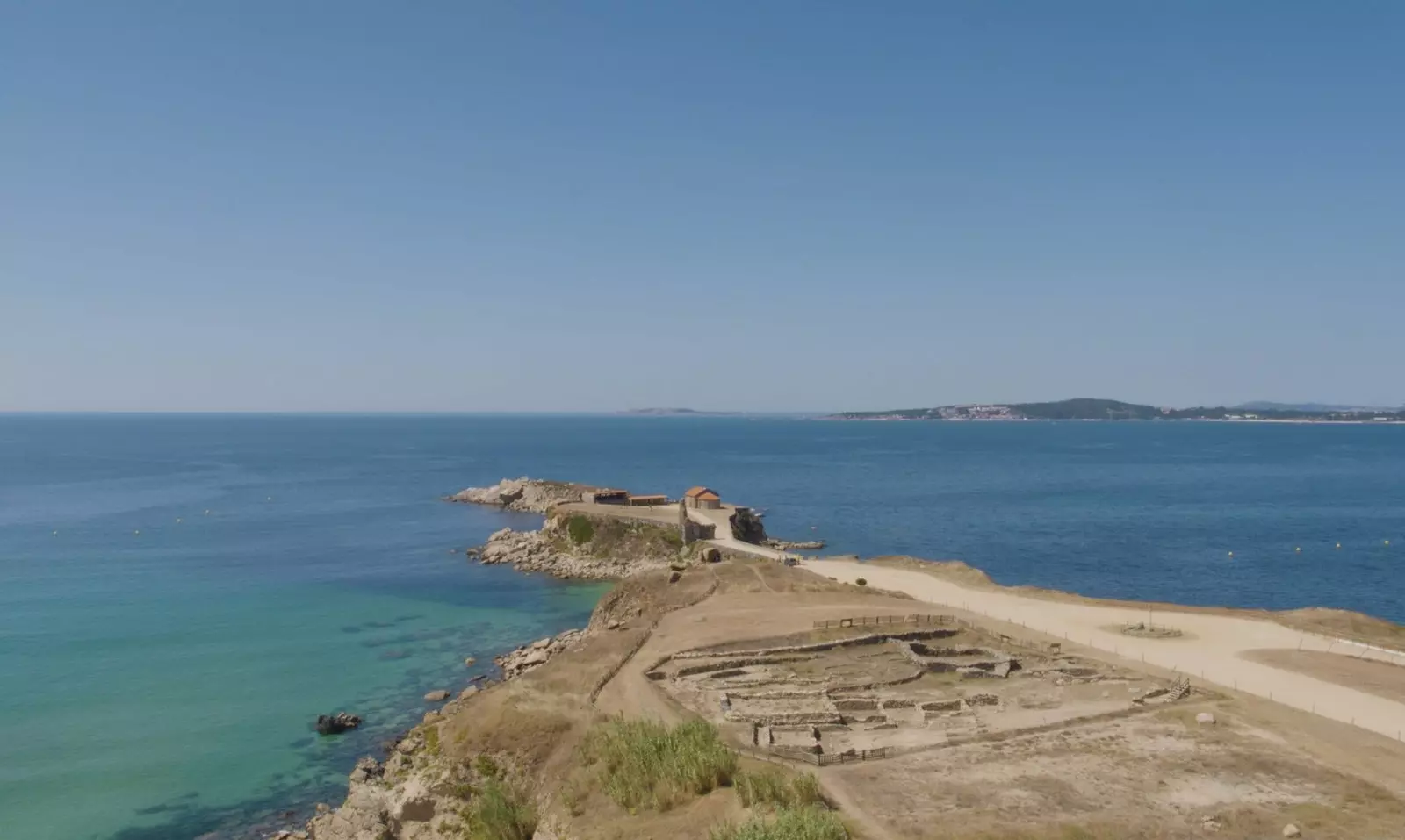
Necropolis and hermitage in A Lanzada, Rías Baixas.
PONTEVEDRA IS MARITIME, BUT ALSO FLUVIAL
The longest river in Galicia flows into Pontevedra and it does so in a big way, forming what is known as Miño estuary, a natural border between Spain and Portugal that treasures the spaces with the greatest biological diversity in the Autonomous Community. 15 kilometers of landscapes with great environmental value (catalogued as Red Natura 2000) that can be explored either on foot along its marked trails or by boat, between river islands such as Goián or Canosa.
The Miño has traveled almost 350 kilometers from the Serra de Meira, bravely crossing Lugo and Ourense, and it is in the Rías Baixas where it stops to rest, right at the end, in the great mouth of 2,000 meters wide in which an extensive sandbank has been formed with several river beaches: O Muíño, A Lamiña, Armona and O Codesal.
The area, declared a Special Protection for Birds, fills up in the temperate season with herons, seagulls, harriers, cormorants, sandpipers and other species that come to the wetlands to feed, so its ornithological value is incalculable (It has two observatories and an ornithological station).
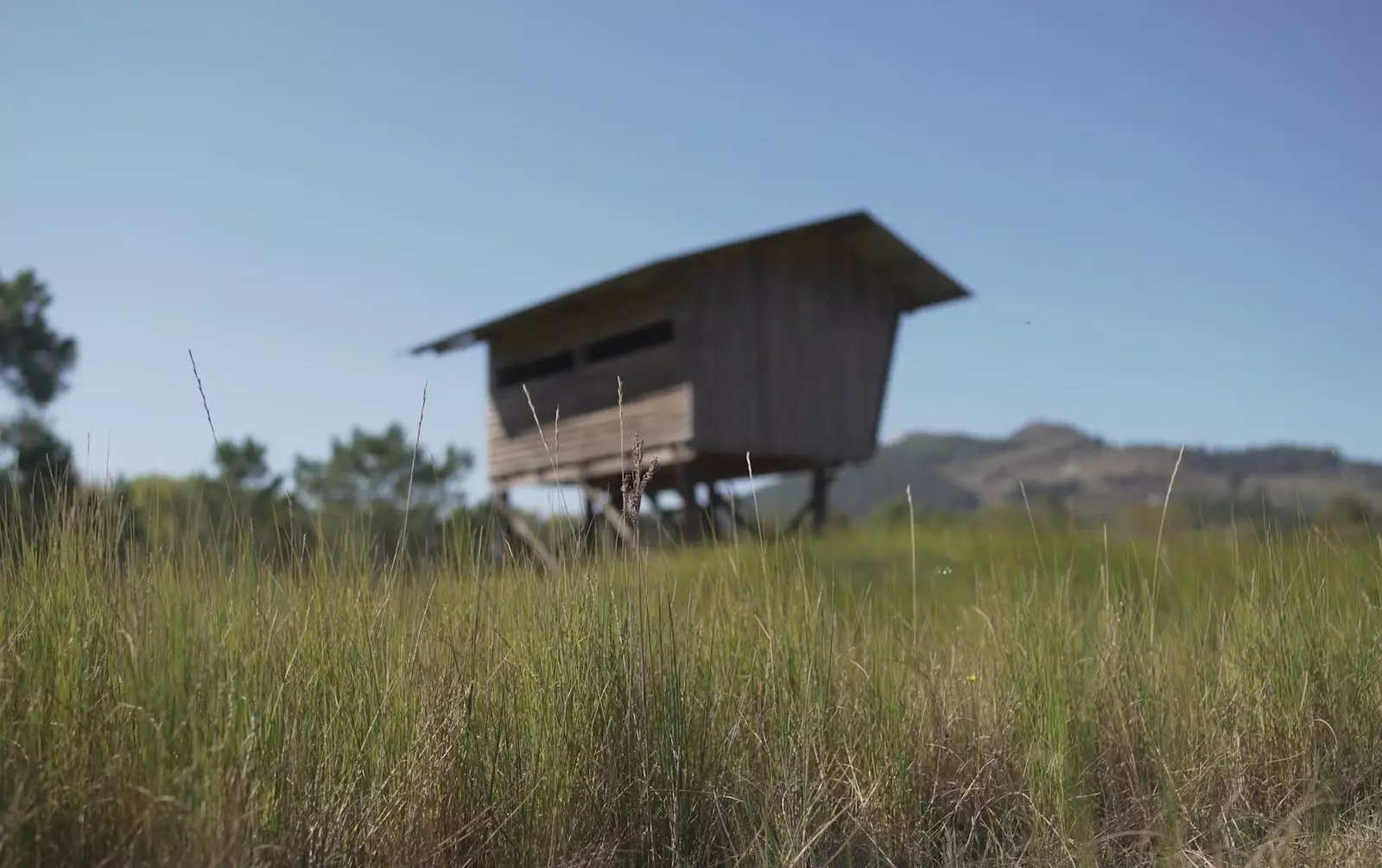
Bird watching in the Miño River estuary, in Rías Baixas.
Those who prefer to observe a much wilder element are in luck, since both from the Pico de San Francisco and from O Facho –the natural viewpoints of the Santa Tecla mountain– the ocean appears before our eyes indomitable and infinite.
But beware! Those who crave a little more adrenaline, in addition to paragliding in O Baixo Miño, can also go looking for it upriver, in its rough waters, either to descend its canyons or go down rafting along its riverbank among eucalyptus, willow and oak trees.
You can also practice all kinds of multi-adventure sports, such as kayaking or canoeing, on the Umia rivers (pay attention to their waterfalls and pools) and Ulla, the latter best known for its O Xirimbao suspension bridge, which joins the provinces of Pontevedra and A Coruña. It was built in the 1960s to join the Xirimbao and Ximonde preserves, but now that fishing is prohibited and everything possible is being done to recover the salmon in the river course (there are crossing ladders), what is coming to ' fishing' in this recreation area is a quiet day in nature and a photo crossing the hanging metal structure also known as A Mariola.
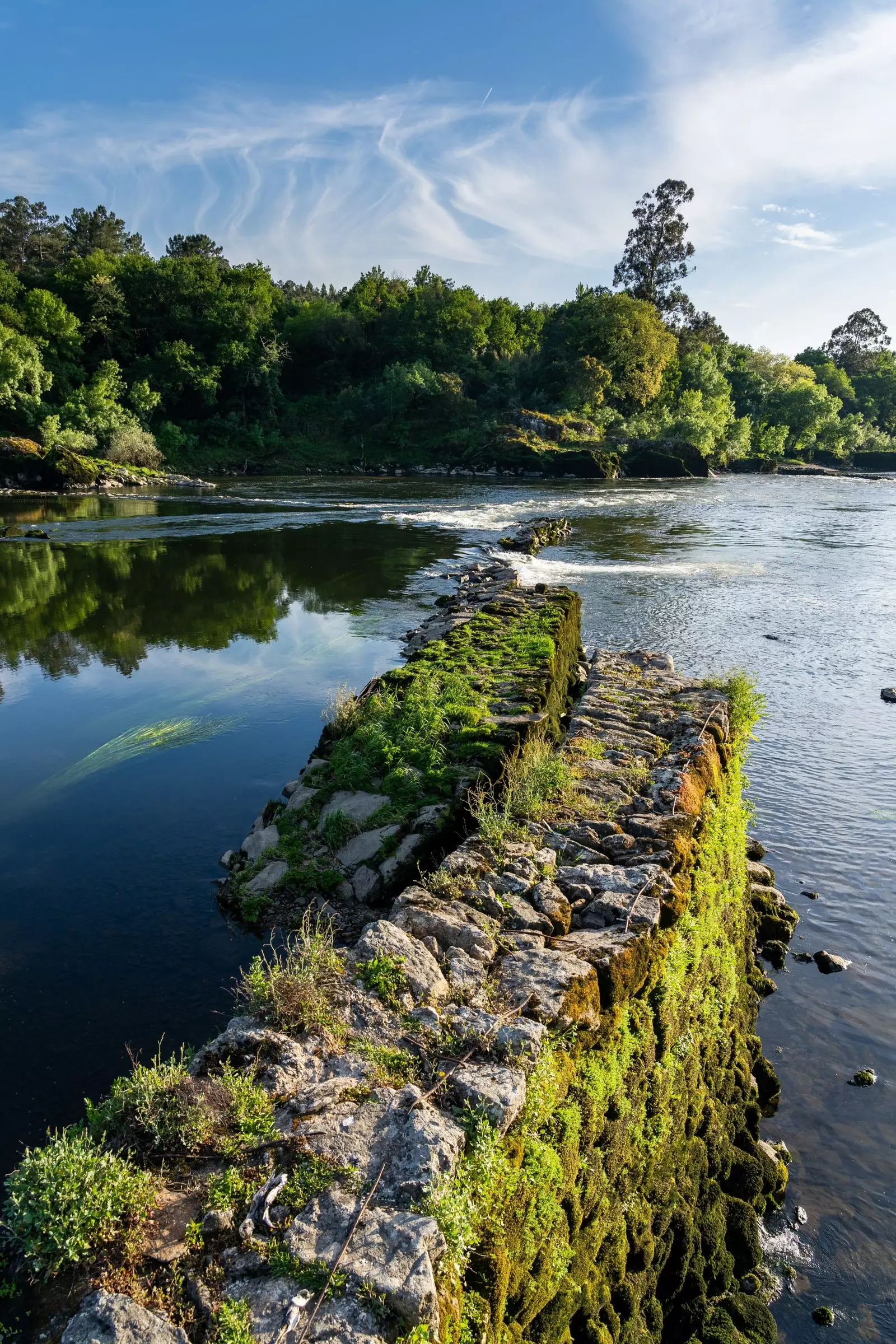
Fisheries on the Miño River, Rías Baixas.
STONE GUARDIANS
Galicia is synonymous with monasteries, and Pontevedra has a lot to do with this. the of San Lourenzo de Carboeiro, embracing a meander of the Deza River since the 10th century and declared a National Monument in 1931, that of Santa María de Armenteira, linked to the legend of Ero from one of the songs of King Alfonso X, or that of San Salvador de Camanzo, Benedictine, also from the 10th century and with three semicircular apses that still preserve their original beauty, as originals are, although from the 16th century, the mural paintings found inside its church when removing a baroque altarpiece.
These are not the only stone monuments and nor are they the only legends that will attract us to the Rías Baixas, since following in the wake of Pedro Madruga, an essential character in fifteenth-century Galicia who currently has his own route, we will tour fortresses, towers, cities and castles, such as the museumized Soutomaior Castle –half medieval fortress, half neo-Gothic palace–, with the Vigo estuary in the background and a garden of camellias ideal for getting lost, or that of Sobroso, which rises imposingly on a hill in Vilasobroso, in Mondariz, and it has a beautiful botanical trail to walk around.
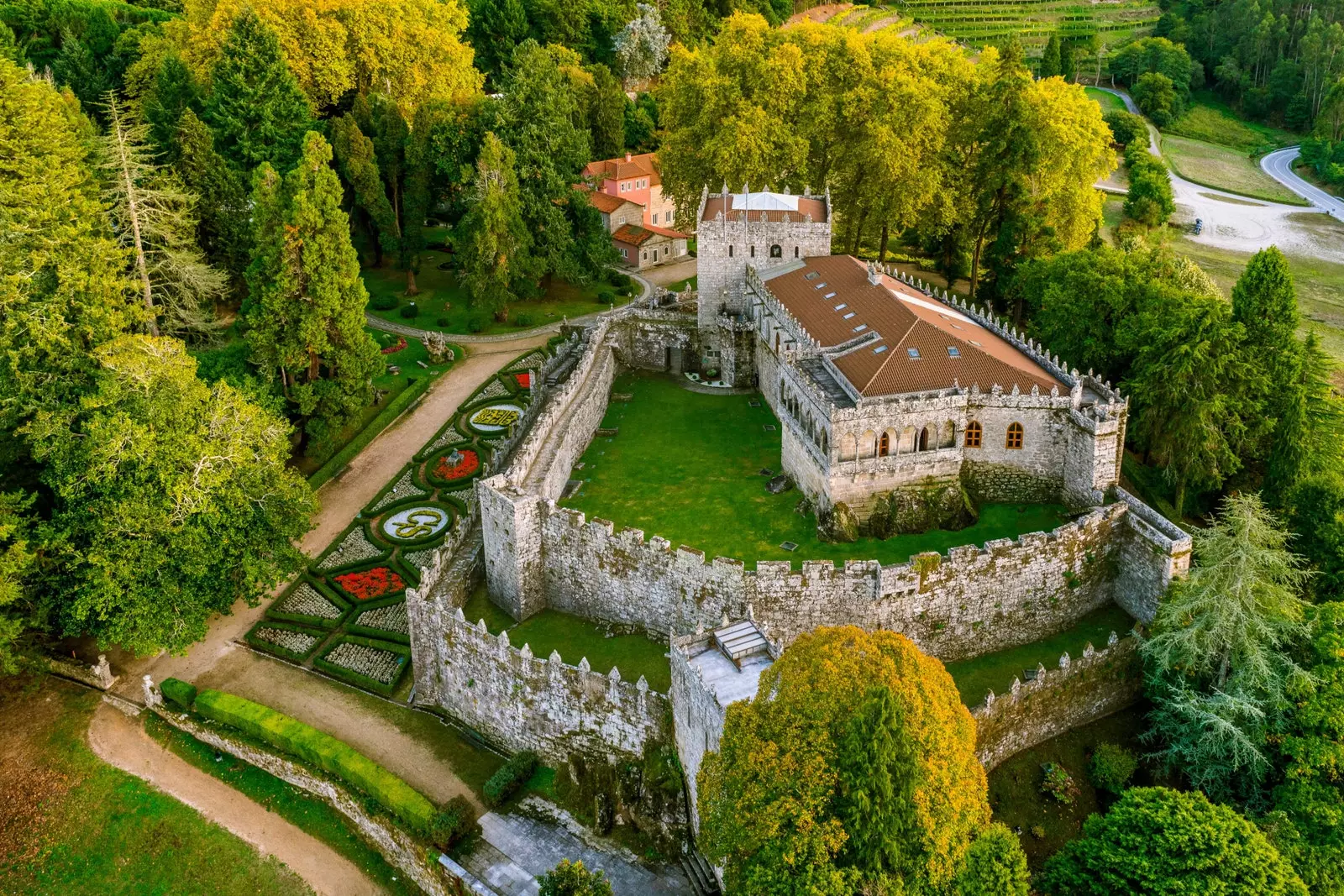
Soutomaior Castle from a bird's eye view, Rías Baixas.
who was this famous and influential nobleman that he kept the bishop of Tui prisoner in the tower of Fornelos, the city of which he was Viscount, and that he obtained from Enrique IV an interest on the revenues of Vigo, Redondela and Pontevedra? Well, according to a theory that is gaining more and more strength, Pedro Madruga would have been, neither more nor less, Christopher Columbus himself, who would have adopted this nickname after pretending to be dead to obtain benefits from the Catholic Monarchs, with whom he was at enmity.
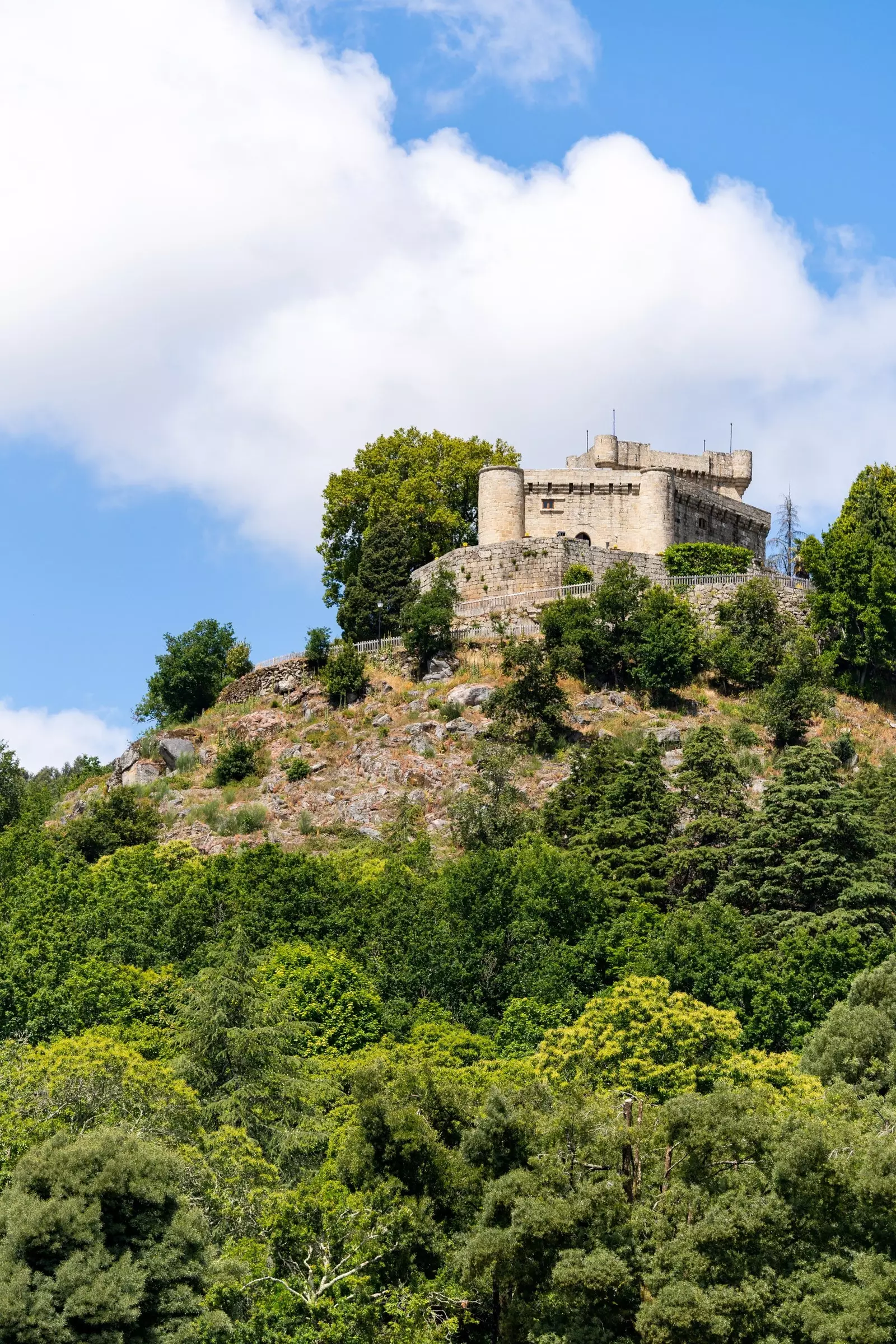
The imposing Castle of Sobroso, Rías Baixas.
PONTEVEDRA IS LITERARY
we understand why O Salnés, with his Atlantic nature, conquered great literary, because the region includes Sanxenxo, O Grove, Illa da Toxa and A Lanzada beach, bathed by the Atlantic (and by those albariños with a taste of salt). Also that Ramón María del Valle-Inclán, who illuminated the renewal of literature at the beginning of the 20th century, found inspiration in Vila Nova de Arousa, town in which he was born and raised as a "village gentleman", as José Rubia Barcia states in his book * Figurehead. *
To learn a little more about the life and work of this outstanding playwright, novelist and poet of the Generation of '98, all you have to do is go to his House-Museum, which occupies what is known as Casa do Cuadrante, in the Council of Vilanova de Arousa. There, between first editions, documentary collections and other books linked to his person, it will be much easier for us to guess the inner world that led the author of Luces de Bohemia to devise the grotesque, the literary genre with which Valle-Inclán criticized the world and society that surrounded him.
'Poeta de Raza', for having promoted the creation of the contemporary Galician literary imaginary, Ramón Cabanillas (Moncho to his friends) was born and died in Cambados, just as a sculpture of the poet sitting on a bench in the town reminds us, through which we can follow his footsteps (literal and literary), from the humble seafaring house where he was born in the rúa Novedades to the Furruxa house (or Fraga house), now converted into a municipal library.
Because although the Rías Baixas are ocean, beaches, islands... also They are nature, art and culture.
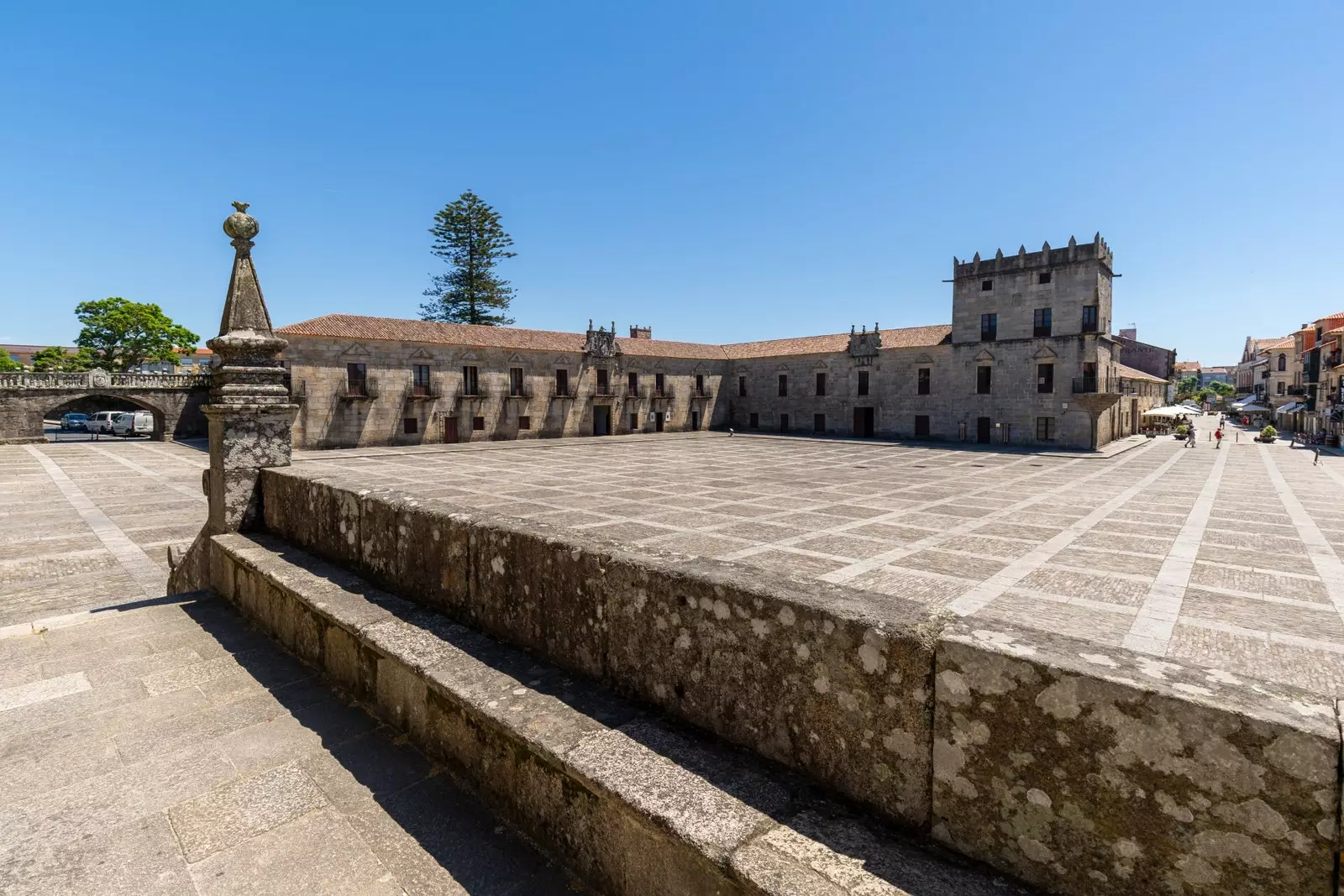
Historical-artistic ensemble of Cambados, Rías Baixas.
